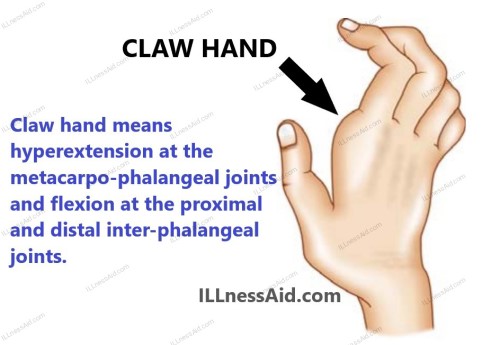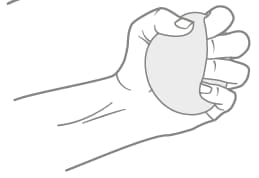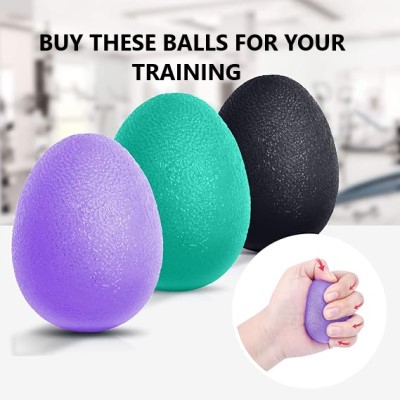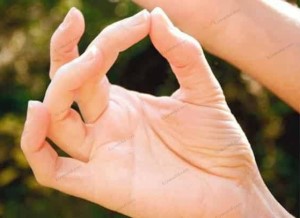The disorder known as “claw hand” affects the hands and fingers, making them look like claws. Numerous things, such as nerve damage, an injury, and specific medical problems, might contribute to this syndrome. Physical treatment (PT) and occupational therapy (OT) can help people with claw hands improve their function and quality of life, despite the fact that the condition can be devastating.

Understanding Claw Hand
A malfunction in the muscles, tendons, or nerves that control the fingers and hand can result in the disorder known as “claw hand.” The fingers curl inward and resemble claws when this malfunction occurs because they are unable to fully extend. The disorder can range in intensity, with some people having a moderate form while others may have a more severe type that might impair their ability to carry out daily chores.
The distinctive malformation of the fingers and hand is the primary sign of claw hands. The knuckles are bent backward, and the fingers are bent at the end and middle joints. The hand appears like a claw as a result.
People who have claw hands may also experience discomfort, numbness, and weakness in the hands and fingers that are afflicted. They might also find it challenging to handle objects and carry out simple actions like buttoning a shirt or handling utensils.
Causes of Claw Hand
The reasons of claw hands are numerous and include:
- Nerve Damage: Claw hands can result from nerve injury to the nerves that govern the fingers and hand. This harm may be brought on by an illness or injury, such as spinal cord damage or carpal tunnel syndrome. Ulnar nerve palsy is a medical ailment that frequently causes claw hands. The ulnar nerve, which connects the shoulder to the hand, can get compressed or injured to cause this. This can occur from an accident, such as a broken wrist or elbow, or through repetitive activities, like typing or playing an instrument.
- Injury: Claw hand can also result from hand, wrist, or forearm trauma. This could involve wounds like a fracture or dislocations.
- Medical issues: Claw hands can also result from specific medical diseases. These may consist of illnesses like arthritis, diabetes, or stroke.
PT(Physical Therapy) Treatment
Physical therapy is a non-invasive approach for treating claw hands that can aid sufferers in regaining strength and function in their affected hands and fingers. Together, you and your physical therapist will create a specialized treatment strategy based on your unique requirements and objectives.
Identifying the underlying cause of the issue is the first step in claw hand physical therapy. A physical examination and diagnostic procedures like electromyography (EMG) or nerve conduction studies can be used to achieve this.
Your physical therapist will work with you to create a personalized treatment plan once the condition’s underlying cause has been identified. This plan may include a number of approaches, including:
- Exercise: Physical therapy for claw hands may include stretches and strengthening exercises for the hands and fingers that are affected. Your physical therapist may also employ manual treatment techniques to widen the range of motion, alleviate pain, and reduce inflammation.
- Splints or braces: Your physical therapist can suggest using splints or braces in some circumstances to support the injured hand and fingers and enhance function. These tools may also make the hand look better while helping to stop further harm.
- Education: To alleviate pain and prevent additional damage, your physical therapist may give you advice on how to change your regular activities. They could also teach you how to do workouts at home to build flexibility and strength.
OT(Occupational Therapy) Treatment
Living with a claw hand can be difficult because it can seriously limit a person’s ability to carry out regular tasks. However, people with claw hands can enhance their function and quality of life with the proper treatment strategy and assistance from an occupational therapist (OT).
Occupational therapists (OTs) are professionals that focus on maximizing freedom and enhancing everyday activity performance for people with physical limits or disabilities. An OT may be quite helpful in creating a specialized treatment plan for people with claw hands that takes into account their particular requirements and objectives.
- Improve Function: Strengthening and improving the function of the hands are two main objectives of OT treatment for claw hands. Stretching, range-of-motion exercises, and grip-strengthening exercises are just a few of the exercises and activities OTs may utilize to accomplish this. People with claw hands can strengthen their fingers and hands through therapy, making it easier for them to carry out daily duties.
- Use Splints and Braces: OTs may suggest the use of splints or braces in addition to exercises to support the injured hand and stop additional damage. These tools can aid in maintaining the hand in a more neutral position, lessening stress on the hand’s muscles and tendons and enhancing general functionality.
- ADLs And Education: Education is a significant component of OT for claw hands. OTs can show people who have claw hands how to go about their everyday duties in a way that puts as little stress as possible on the affected hand. For instance, an occupational therapist (OT) can advise utilizing adaptive tools or utensils to make activities like eating and writing simpler and more pleasant.
Finally, people with claw hands can receive emotional support and direction from an OT. An occupational therapist (OT) can provide support and assist people in developing coping mechanisms to handle the emotional effects of their condition. Living with a physical limitation can be difficult.
Exercises For Claw Hand
Undoubtedly, the following workouts could be beneficial for people with claw hands:

Sit at a table with your injured hand resting palm down on the surface. One finger at a time, slowly raise it as high as you can and then hold it there for a short period of time. The finger should then be brought back to the table. For each finger on your affected hand, repeat this practice.

Stretching the wrist flexors involves sitting in a chair and resting the affected forearm with your hand hanging off the edge of a table or armrest. With your other hand, gently pull down the affected hand, extending the fingers and wrist towards the ground. Hold for 15 to 30 seconds, then switch to the opposite side.

Use a hand gripper or soft stress ball to bolster the muscles in your hands and fingers. Release the ball or gripper after a brief period of pressure. Continue to repeat multiple times.


With your fingers spread out, begin by touching your thumb to each finger, working your way from your index to your pinky. Continue to repeat multiple times.
Before beginning any new fitness program, it is crucial to speak with a licensed healthcare expert, such as a physical therapist or occupational therapist. They can make tailored recommendations and make sure you are engaging in the activities in a secure and efficient manner.
Conclusion
Although claw hand can be a disabling disorder, those who have it can improve their function and quality of life with the help of physical treatment and occupational therapy. Individuals with claw hands can rebuild strength, enhance their range of motion, and carry out daily tasks more easily with the use of an individualized treatment plan that includes exercises, splints or braces, education, and adaptive devices.
If you are exhibiting claw hand symptoms, it’s crucial to seek the advice of a licensed healthcare provider, such as a physical therapist or occupational therapist. Better outcomes and a faster recovery rate can result from early intervention.
Other treatments for claw hands may be medication or surgery in addition to PT and OT. To choose the best course of action for your particular needs, it is crucial to review all available treatment options with your healthcare professional.
Overall, claw hand can be a difficult condition to manage, but with the correct care and assistance, those who suffer from it can enhance their quality of life and function. Individuals with claw hands can rebuild strength, enhance their range of motion, and carry out daily duties more easily by working with a skilled healthcare practitioner, such as a physical therapist or occupational therapist.
Thank You for reading this far, today we talk about claw hands with their treatment and exercise of OT and PT. If you have any doubt regarding this then u can go contact us page.

